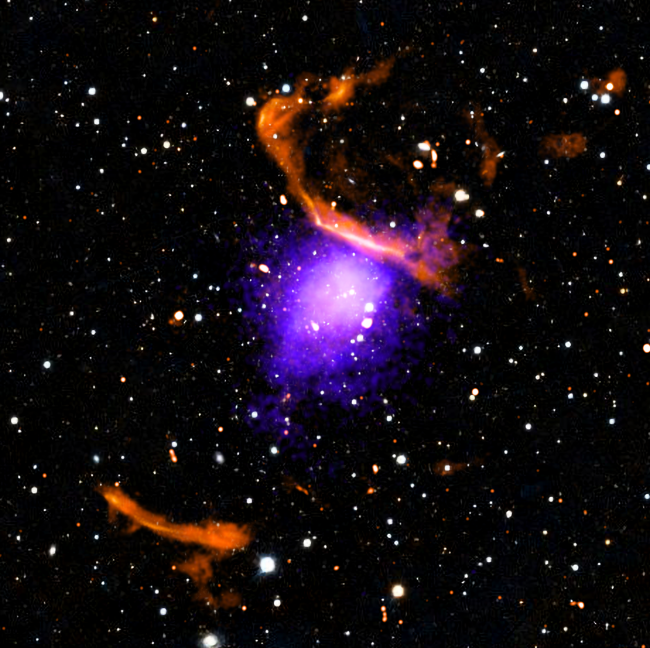
Record-Breaking Cosmic Structure Discovered in Colossal Galaxy Cluster
Scientists have discovered an enormous galaxy cluster, PLCK G287.0+32.9, surrounded by the largest known cloud of high-energy particles—stretching over 20 million light-years. This record-breaking structure sheds new light on how turbulence and shock waves in galaxy clusters can sustain powerful radio emissions over billions of years.
Learn more
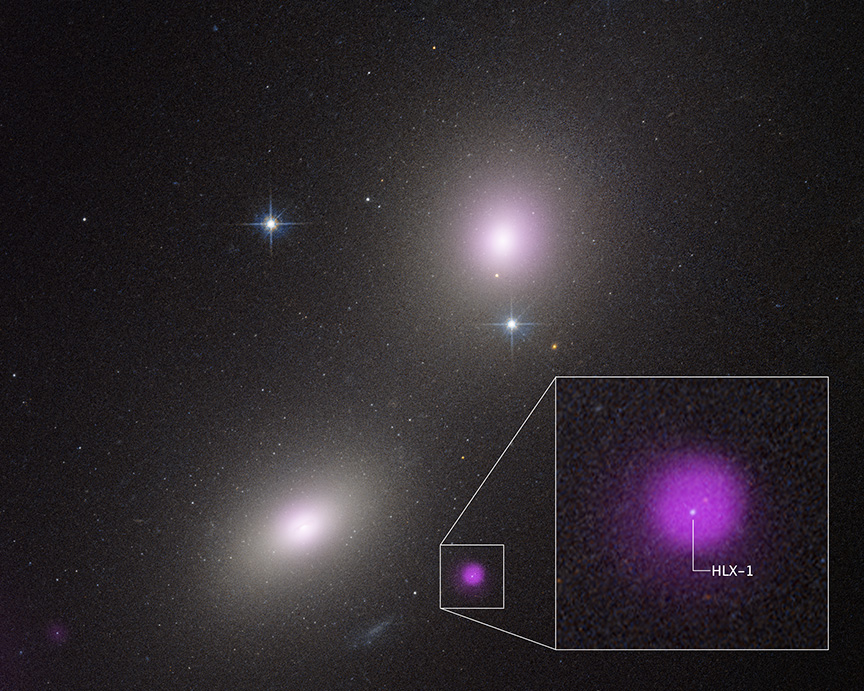
NASA's Hubble, Chandra Spot Rare Type of Black Hole Eating a Star"
NASA’s Hubble and Chandra telescopes have identified a tantalizing candidate for an intermediate‑mass black hole, named NGC 6099 HLX‑1, located roughly 450 million light‑years away. The object appears to be tearing apart a passing star (a tidal disruption event), producing intense X-rays and optical light that signal the rare feeding behavior of this cosmic middle‑weight black hole.
Learn more
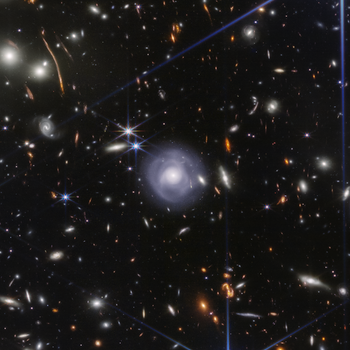
NASA Webb 'Pierces' Bullet Cluster, Refines Its Mass"
A stunning new image of the Bullet Cluster, combining data from NASA’s Chandra X-ray Observatory and the James Webb Space Telescope, reveals a detailed view of the separation between hot gas, dark matter, and galaxies. This visualization offers new insights into the cluster’s mass distribution and strengthens constraints on the behavior of dark matter during cosmic collisions.
Link to the image
Learn more

NASA's Chandra Sees Surprisingly Strong Black Hole Jet at Cosmic "Noon"
A powerful jet from a distant black hole, observed with the Chandra X-ray Observatory and the VLA, offers a rare glimpse into the early Universe. Illuminated by the afterglow of the Big Bang, this jet dates back to “cosmic noon”, when galaxies and black holes were growing at their fastest.
Learn more
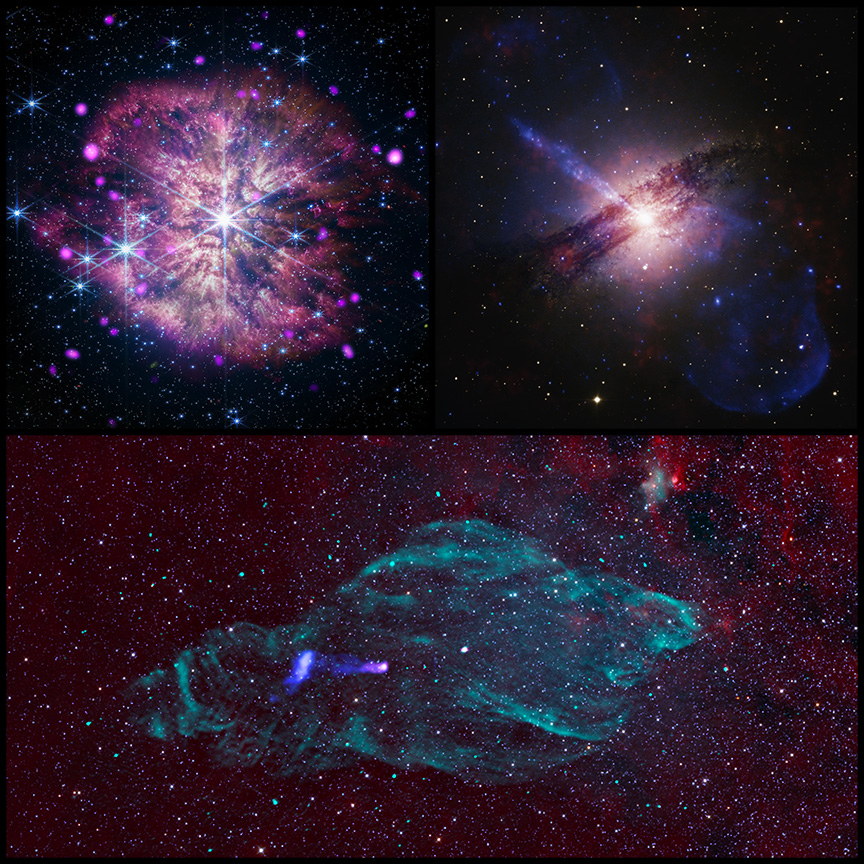
NASA Telescopes Tune Into a Black Hole Prelude, Fugue
NASA has released three new sonifications that explore different stages of black hole evolution. These include WR 124, a massive star potentially collapsing into a black hole; SS 433, a binary system emitting X-rays; and Centaurus A, a galaxy with a supermassive black hole launching a jet across its span.
Learn more
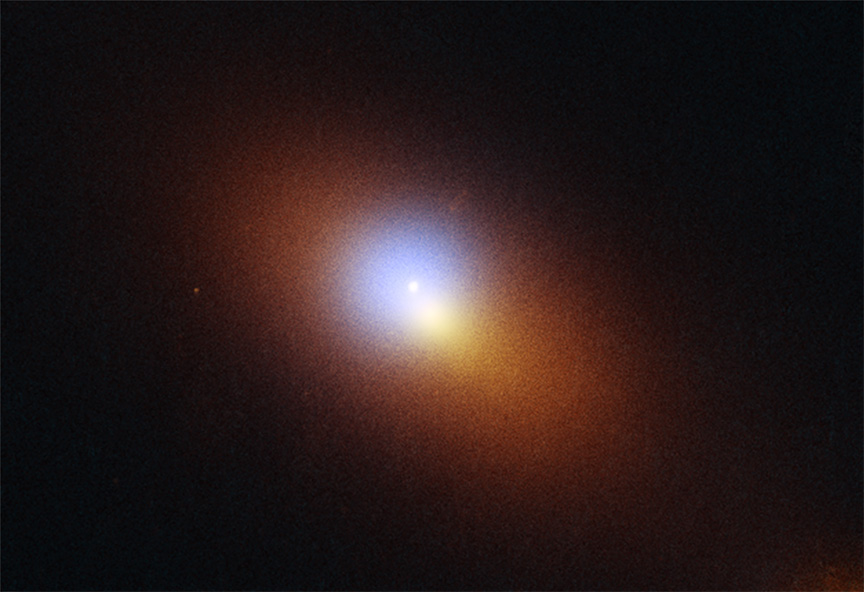
NASA's Hubble Pinpoints Roaming Massive Black Hole
Researchers have discovered a rare, wandering supermassive black hole devouring a star in a galaxy 600 million light-years away. Unlike typical tidal disruption events that occur at galactic centers, this event was observed 2,600 light-years from the galaxy's core, indicating the presence of a second, offset black hole.
Learn more
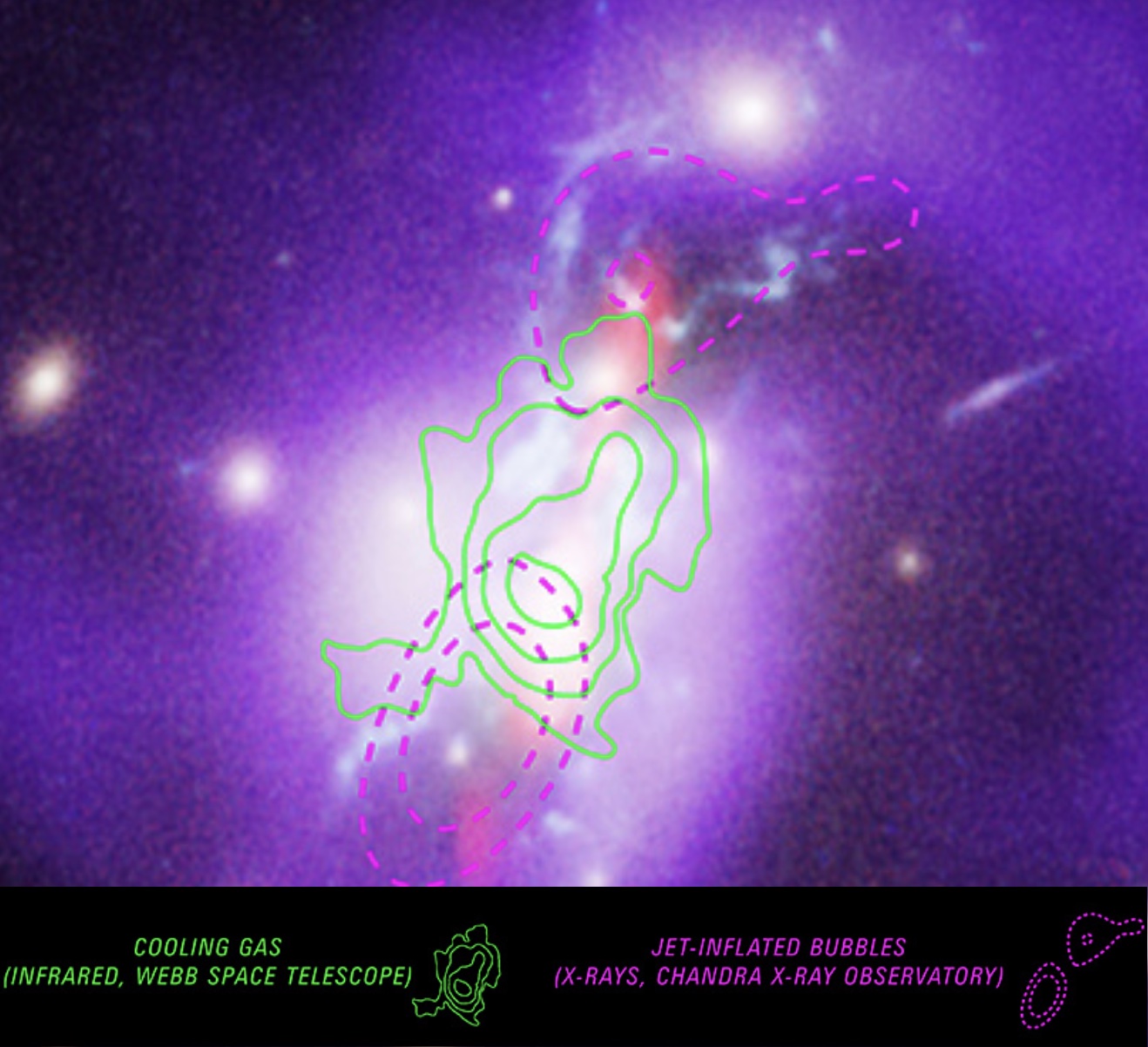
Webb Maps Full Picture of How Phoenix Galaxy Cluster Forms
Researchers have resolved the mystery of the Phoenix Galaxy Cluster's high star formation rate by utilizing data from the James Webb Space Telescope and other observatories. They discovered that intermediary warm gas within cavities tracing the very hot gas reconciles the cooling and star-formation rates.
Learn more
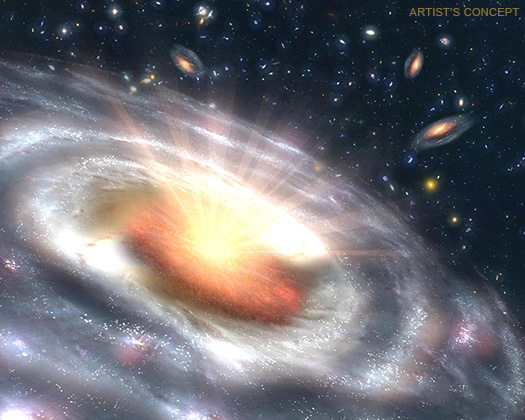
This Quasar May Have Helped Turn the Lights on for the Universe
The newly discovered quasar J1429+5447 in the early universe, with its rapid X-ray brightening, reveals a powerful jet pointed toward Earth. This rare finding provides key insights into reionization and the mysterious growth of supermassive black holes.
Learn more
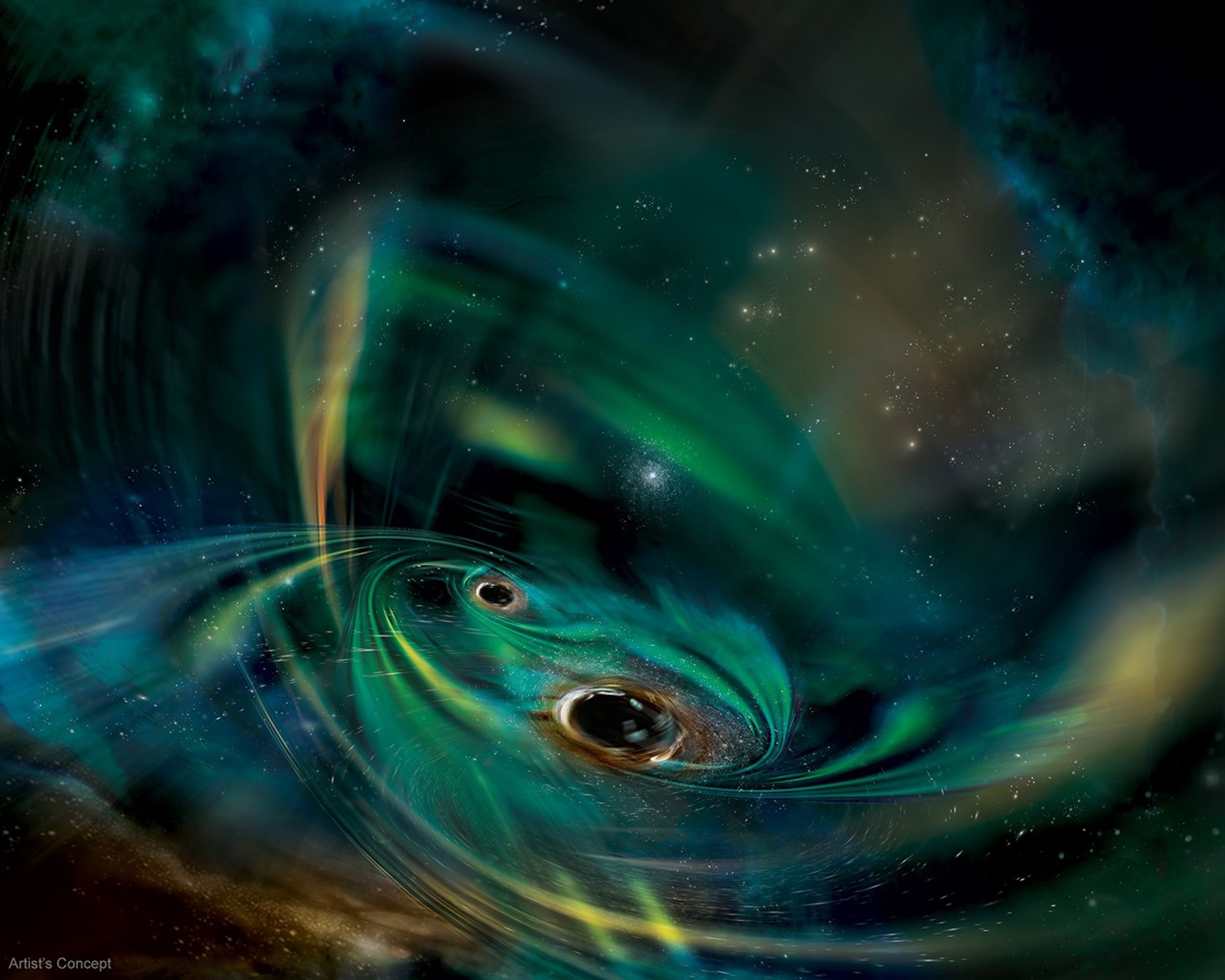
NASA’s Swift Studies Gas-Churning Monster Black Holes
Swift Observatory has discovered two supermassive black holes disrupting a gas cloud at the center of a distant galaxy, producing periodic flares as they orbit each other. The event is identified as the tidal disruption of a massive gas cloud, offering new insights into black hole interactions and galaxy evolution.
Learn more
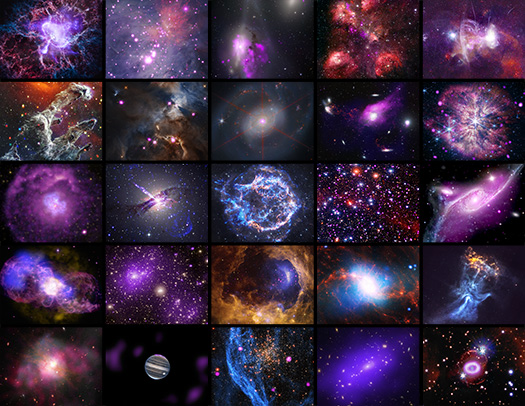
Celebrate NASA’s Chandra 25th Anniversary
NASA’s Chandra X-ray Observatory marks 25 years in space with the release of 25 stunning new images, showcasing its unparalleled view of the universe. From black holes to exploding stars, Chandra continues to revolutionize our understanding of the cosmos.
Learn more









